[Update] This work has now been published with Prof. Michelle Brown in British Archaeology.
Just to the left of the south porch of Gulval Church, near Penzance in Cornwall, lies a large block of granite. I first came across it on a visit to the churchyard in 2012. However, it really piqued my interest a couple of months ago after reading a short report in Newsletter 132 of the Cornwall Archaeological Society. The article, entitled ‘An unusual stone at Gulval Church‘, by Professor Mick Aston, Teresa Hall, Professor Rosemary Cramp, Ann Preston-Jones and Andrew Langdon, highlighted that the block was a medieval cross-base, and was decorated on all four sides. Aside from the south, pictured here, the images on the other sides were very difficult to see at all. Ann and Andrew visited the stone at night “armed with car batteries, a mirror, two spotlights, a tripod, head torches, and a camera” to capture raking light photos of the decorations to see if controlled shadows could be used to interpret the decorations.
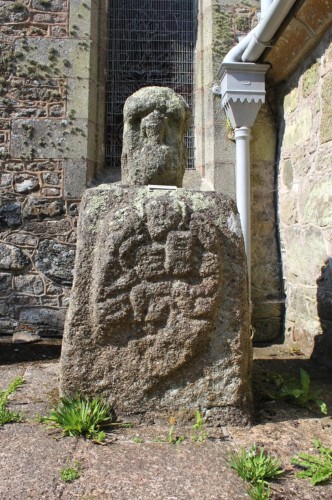
The results were good, producing a set of shadowy atmospheric photos of each side. Professor Cramp began to interpret the scenes from these photos but noted that, while useful, the photos only provided a single fixed view, and she had not seen the cross-base with her own eyes. It was thus difficult to say for sure what was depicted on this rough stone.
It was shortly after receiving the newsletter that I also heard the sad news of Mick Aston’s death. Doubtless that Mick would have had a continued interest in the cross-base, and given that I only live a few miles from the church I became determined to use the tools available to me to record the cross-base and see if I could help with the interpretation.
On 8 June 2013 I visited Gulval Church and recorded in high resolution 3D each side of the cross-base using a photogrammetric approach. Taking a series of over a hundred overlapping 18 megapixel scale photos at a fixed focal length, I covered the whole block. It was quite a tricky subject to tackle, as there is very limited clearance between the cross-base and two of the church walls.
Over the next few weeks, I began to process the images into 3D point clouds, and from there to solid 3D meshes. Afterwards, I subjected each side to a series of techniques which I have used to analyse prehistoric rock art and inscriptions in the past. The results were fantastic.
What is depicted on the cross-base?
Thanks to this analysis, I believe that we now know what is shown on the cross-base at Gulval. The existing interpretations, as laid out in the CAS Newsletter, didn’t match up with what I have found. The computer-generated images, shown below (and may others that I have created using false colour representations of depth), have been able to provide a slightly clearer representation of the granite carvings, and, I believe, help perceive them in a different way. I can now see many of the details in the original photos now that I know what I am looking for.
Rather than sit on this discovery for ages until everything is just right, I have decided to post my initial findings here. It does not represent a full description of the findings and condition of the cross-base and its imagery, and it builds upon the work already done.
Firstly, I must thank my friend, Nick Ford, for putting me onto the iconography – I believe that he spotted what was depicted in the first image I showed to him straight away, and knew what the others would reveal. It led to an exciting evening searching for comparative images, and further enhancing them. And without the original report in CAS Newsletter 132 (now online) I wouldn’t have got this point at all.
The cross-base depicts the four Evangelists, Matthew, Mark, Luke and John, as the four living creatures described in Ezekiel 10:14 and Rev 4:6-7.
Revelation 4:6-7
Also in front of the throne there was what looked like a sea of glass, clear as crystal.
In the center, around the throne, were four living creatures, and they were covered with eyes, in front and in back.
7 The first living creature was like a lion, the second was like an ox, the third had a face like a man, the fourth was like a flying eagle.
New International Version (NIV)
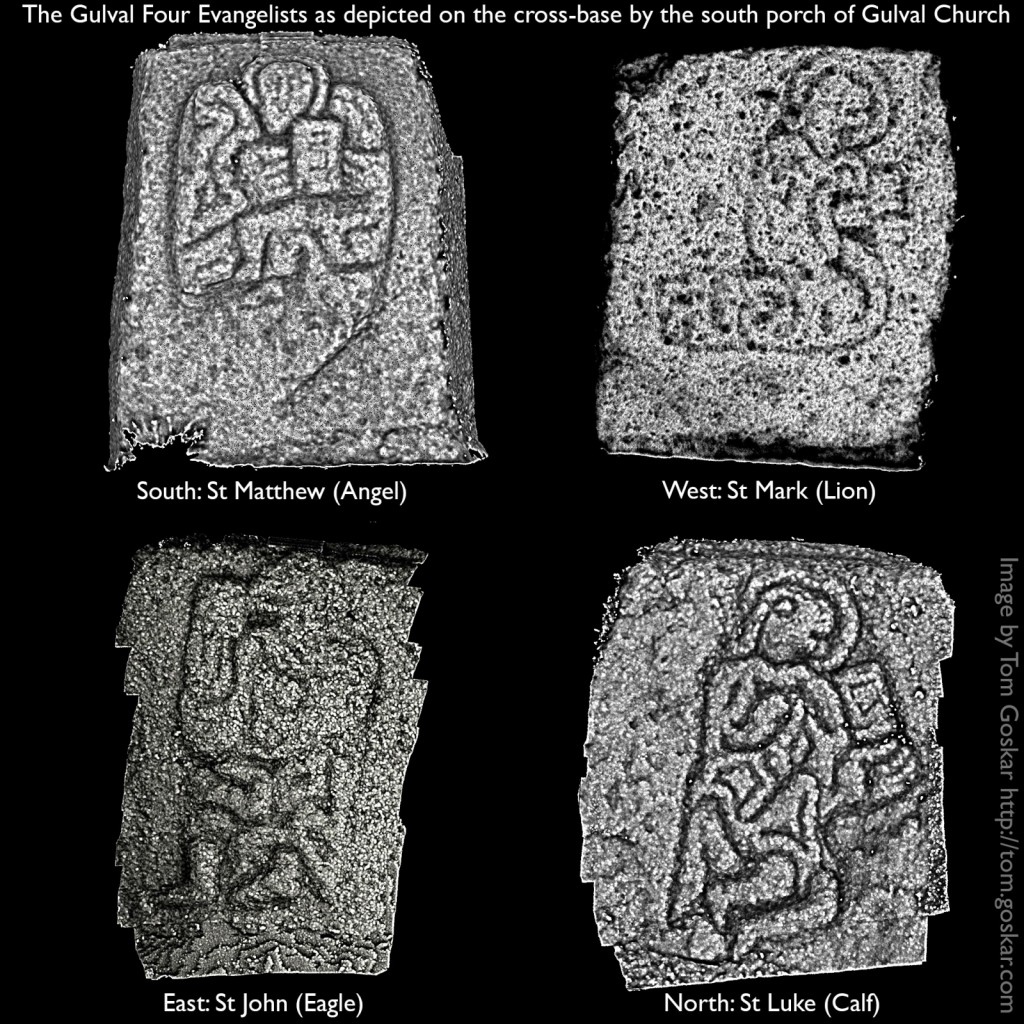
The south side of the stone depicts St Matthew. He is symbolised as a winged man or an angel, and depicted here with a halo, holding a book (Gospels or Book of Life?) with “MT” inscribed on it. The lower part is damaged. This image shows the details picked out using an ambient occlusion filter.
On the west, facing outwards, is St Mark. He is shown kneeling, with haloed lion head. His book, held in his left hand, has “M” on it. It is possible that he is giving the sign of benediction with his right. The folds of his robes are nicely visible.
On the north, facing the church proper, is Luke, depicted here seated with haloed calf head . His book, held in a rather large left hand, has “LS” on it (Lucas). Luke is mainly depicted as an ox, but it isn’t unknown for him to be shown as a calf.
On the east, facing the porch wall, perhaps the most badly eroded of them all, is St John, depicted as the eagle. His robes, especially the folds around his legs, are clearly visible. It is difficult to discern the presence of any halo. He is holding a book in his right hand, with what looks to be an “H” on it (not easily visible in this image – only range-colouring a very small area shows this). It would be very neat if it said “IH” – Iohan, but archaeology isn’t always a neat discipline. Further work needs to be done here.
We must remember that the stone block onto which these images are carved is a course Lands End granite. Some of the quartz crystals are several centimeters long – fine detail just isn’t possible – and granite can crumble when exposed to the elements.
A Tetramorphic Cross-Base?
So there we have it. Starting on the south side of the stone, if you run the sequence clockwise (South, West, North, East), runs the familiar sequence of Matthew, Mark, Luke and John. Matthew, the best preserved of all, was positioned facing outwards, and the shield-like shape of the carving has, according to some, become thought to be a coat of arms. Now that we know what is really shown here, perhaps we can even call it a tetramorphic cross base, bringing together the symbols of the Four Evangelists together into a single object. One thing is for certain, however, and that is a lot more work needs to be done on the Gulval cross-base, in terms of research, verification, and recording techniques. Reflectance Transformation Imaging (RTI) will certainly be the next approach for further enhancing the panels. Comparative examples need to be sought.
This could have a big impact upon our understanding of Gulval, and indeed have ramifications on how we understand the history of this part of Cornwall in the early Middle Ages.
The authors of the original article in the CAS Newsletter have had copies of the images and my findings in advance of this blog post. Luckily, when I sent my findings to Ann Preston-Jones, she was pleased, as she felt that these were the Evangelists, but lacked firm evidence to back it up. I trust that my arguments, and the images above, will help to win around any doubters.
I have been asked to add the finished images of the Evangelists to the forthcoming Corpus of Early Cornish Sculpture, to which I am honoured to be able to make a contribution. The vicar of Gulval Church is adding the images to his parish newsletter. Who knows, even a sermon may come of it!
Further images and information will be added to subsequent blog posts, and linked from here, so do bookmark this page and check back from time to time.
And now for the plug!
As an independent archaeologist, I am of course pleased to offer my professional services. Please contact me with any enquiries.
Below is a series of images of St John (Eagle) from the east side of the cross-base. The 3D data has been filtered in a number of ways to extract the detail of the carving.
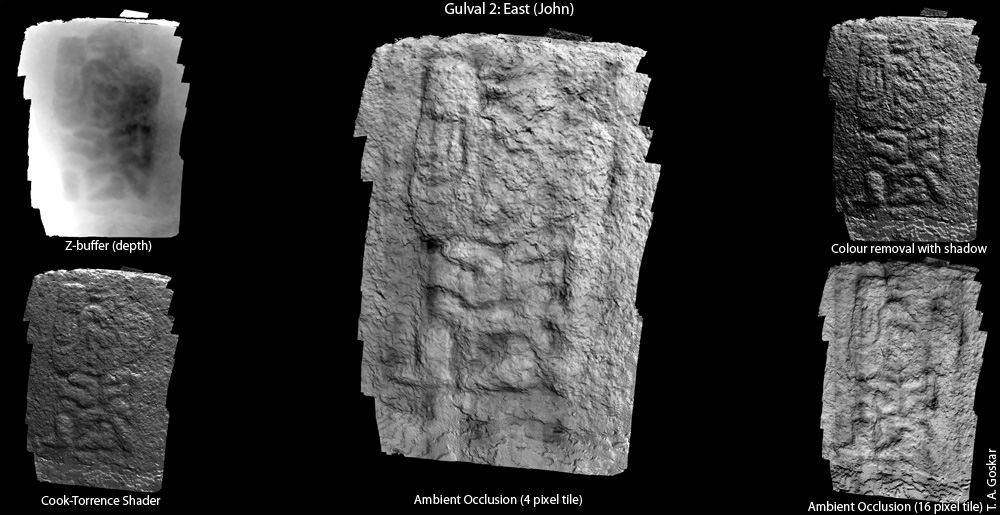
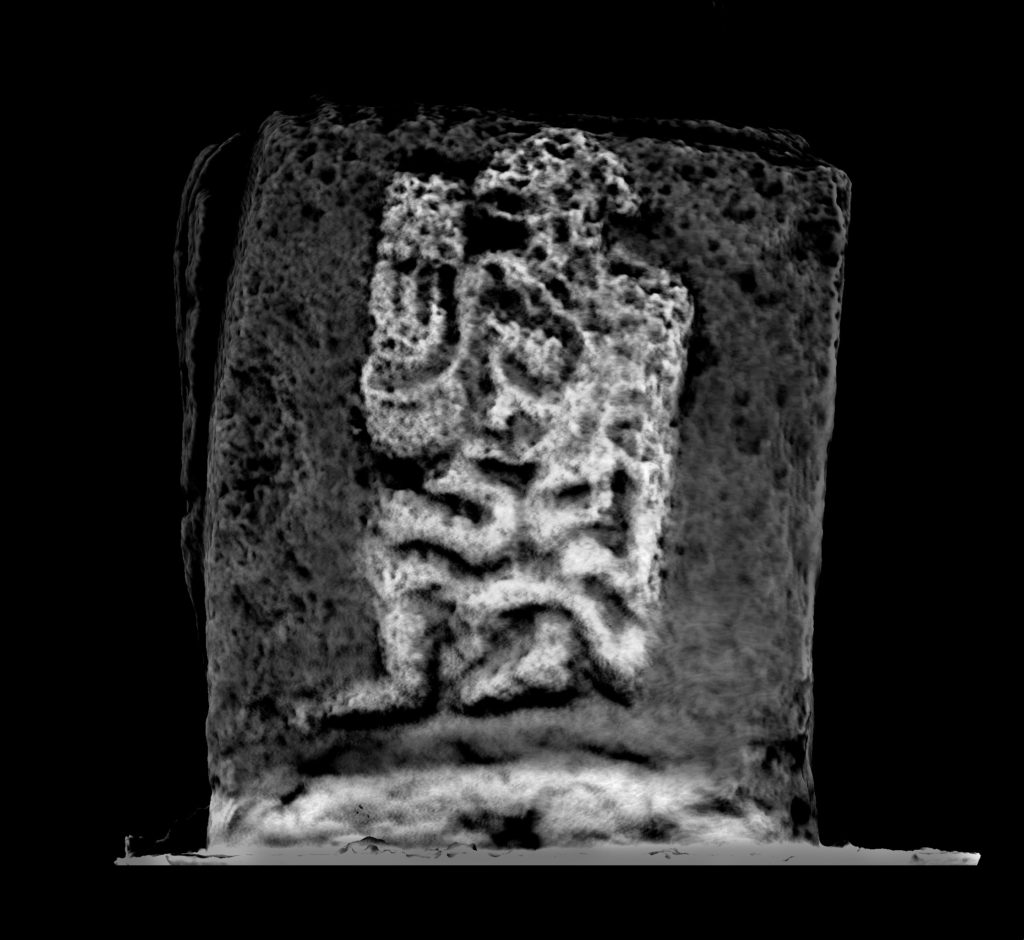
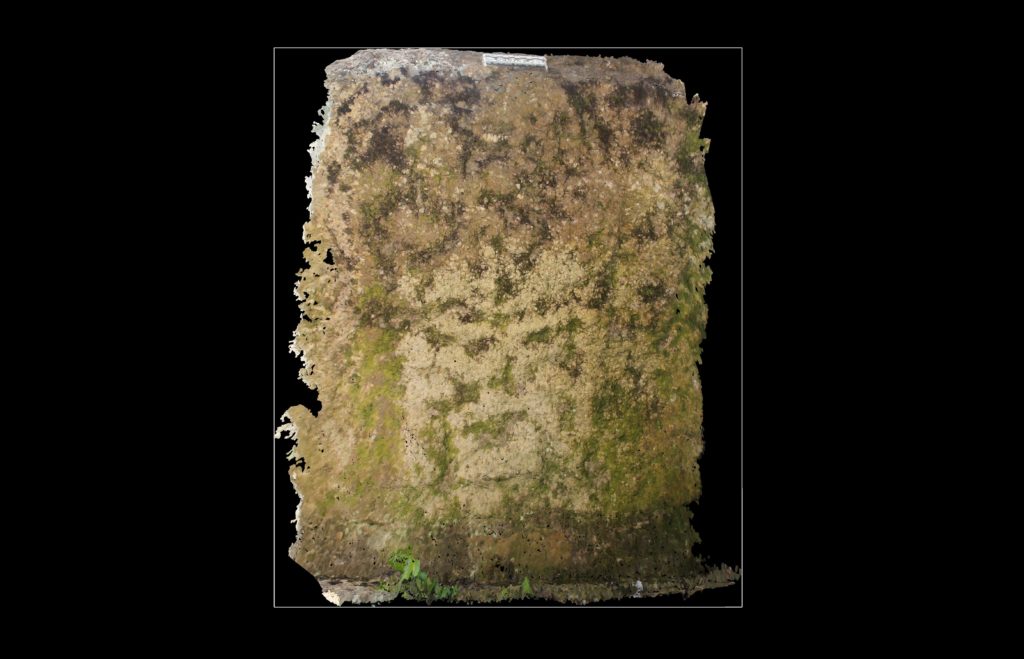

Comments
3 responses to “A Medieval Discovery at Gulval Church, Cornwall”
Tom this is fascinating. Your work shows so clearly how to interpret the cross-base. It’s great to find really innovative work so close to home – I am also based in West Cornwall!
Thanks Jean – I’m glad that you’ve found it interesting. There’s still a lot more to discover!
Brilliant! What wonderful work, with amazing discovery! Particularly like the “Z-buffer (depth)” image, really brings the badly preserved detail to light. Would like to do an ‘outline trace’ of that!
Having seen a lot of ‘Pictish’ art in Scotland, it is fascinating to see what was created on the much-harder-to carve granite!
Amazing, thanks!